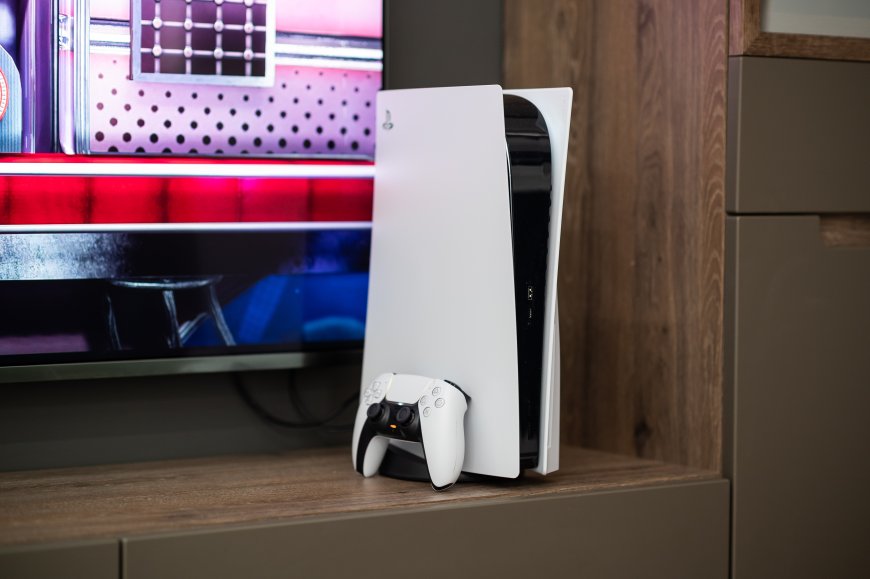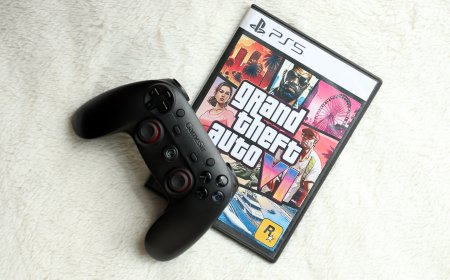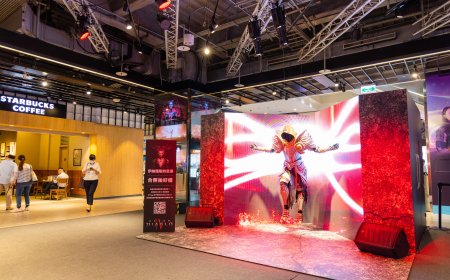Why Ghost of Yōtei Made Waves in 2025, and What it Says About Gaming Trends
Ghost of Yōtei became a breakout hit in 2025, reshaping player expectations and revealing key gaming trends influencing development, open-world design, and storytelling.

The year 2025 delivered some incredible video games, but none made quite the immediate, seismic impact of Sucker Punch Productions' Ghost of Yōtei.
This game, which was launched in late 2025 only for the PlayStation platform, was not a simple action-adventure title; rather, it was a cultural moment. The new main character, Atsu, and the beautiful environment surrounding the freezing and dangerous summits of Mount Yōtei in Ezo (present-day Hokkaido, Japan) received appreciation from both critics and fans.
But the game’s overwhelming success—which saw the Ghost of Yōtei Collector's Edition sell out everywhere within minutes—wasn’t just luck. Ghost of Yōtei didn't just follow the rules of a modern blockbuster—it broke them, setting the standard for the next generation of AAA gaming.
If you are curious Whether Ghost of Yōtei is a sequel or a standalone title, the answer would be both of them: it is a standalone entry occurring centuries after the original Ghost of Tsushima. Its success proved the validity of four major industry trends that were hotly contested and every developer now wants to adopt them.
Trend 1: Quality Over Quantity in Open Worlds
For years, the motto of open-world games was simple: Bigger is Better. We got massive maps filled with endless icons and checklists that often felt like homework. Ghost of Yōtei rejected this completely.
Denser Worlds are the Destiny
Instead of an impossibly large world, Ghost of Yōtei focused its map around the smaller, more geographically diverse region near Mount Yōtei. Every corner of the environment was bursting with detail, secrets, and unique visual splendor.
This move mirrors the growing success of games that prioritize density and meaningful content over sheer size. Every side mission felt like a mini-story, not just a task.
Players are tired of empty space. The success of Ghost of Yōtei proved that an open world should be a place of exploration and discovery, where every icon on the map represents a compelling narrative or a unique reward.
Trend 2: Fresh Faces and Deep Character Focus
The game’s lead character was a major driving force behind the huge anticipation.
The Power of the New Protagonist
The Ghost of Yōtei protagonist, Atsu, is a powerful new figure in the series. Her story focuses on the raw, often brutal, realities of the early Edo period. This shift showed that gamers are ready to embrace new heroes in established worlds.
The initial Ghost of Yōtei trailer focused heavily on Atsu's personal struggle and unique combat style (centered around a chain-sickle), sparking massive excitement.
The market is rewarding studios that take calculated risks with their lead characters. While sequels often rely on familiar faces, Yōtei's decision to move to a new timeline and a powerful new hero proved that players value a fresh, compelling narrative hook even more than simple familiarity.
Trend 3: Cinematic Immersion is Non-Negotiable
Playing Ghost of Yōtei was not only about the gameplay but also about the sensory experience that reaffirmed the gamers' expectation of next-generation hardware to be fully utilized.
PS5 Mastery and Haptic Feedback
The highly optimized graphics for the Ghost of Yōtei PS5 version were stunning. It included Advanced Ray Tracing (making the snowy peaks look hyper-realistic) and lightning-fast load times. More critically, it integrated the DualSense controller masterfully.
The game’s intricate combat system leveraged the adaptive triggers to make the draw of Atsu’s bow and the tension of her grappling hook feel physically tangible. Similarly, other highly-rated 2025 exclusives also focused heavily on this immersive, physical feedback.
It's no longer enough for a game to just look pretty; it must feel real. The success of Yōtei reinforced that gamers value the sensory feedback and immersion provided by the Ghost of Yōtei PS5 hardware as much as they value raw graphical fidelity.
Trend 4: Deep Systems Reward Mastery Over Grinding
The era of simply upgrading "Sword Damage +10" is giving way to complex systems that reward player effort and strategic thinking.
Combat That Requires Skill
The developers refined the combat system by introducing a Weapon Counter System linked to multiple new weapon types (katana, yari, chain-sickle). The key wasn't having more weapons; it was how each weapon opened up new options to counter specific enemy types.
The market is demanding Deep, Skill-Based Combat Systems. The difficulty of learning different weapon types and their respective enemy counter techniques made every battle tactical which in turn rewarded players who dedicated their time to really mastering the mechanics of the game instead of just leveling up their gear. The combination of this strategic depth with the blockbuster graphics displayed in the Ghost of Yōtei trailer resulted in an overwhelming mix of player engagement.
Wrapping Up: A Blueprint for the Future
The strategic depth combined with the blockbuster graphics showcased in the trailer for Ghost of Yōtei created an amazing mix of player engagement that was impossible to resist. It proved that players are done with repetitive, massive maps and shallow mechanics. They want focused quality, compelling new narratives, and deep sensory immersion that justifies the power of their consoles.
The formula for the future, confirmed by the hype around the Ghost of Yōtei collector's edition and the game's universal praise, is simple: prioritize the player experience, reward their skill, and make every moment count.
What's Your Reaction?
 Like
0
Like
0
 Dislike
0
Dislike
0
 Love
0
Love
0
 Funny
0
Funny
0
 Angry
0
Angry
0
 Sad
0
Sad
0
 Wow
0
Wow
0


























































































































































































